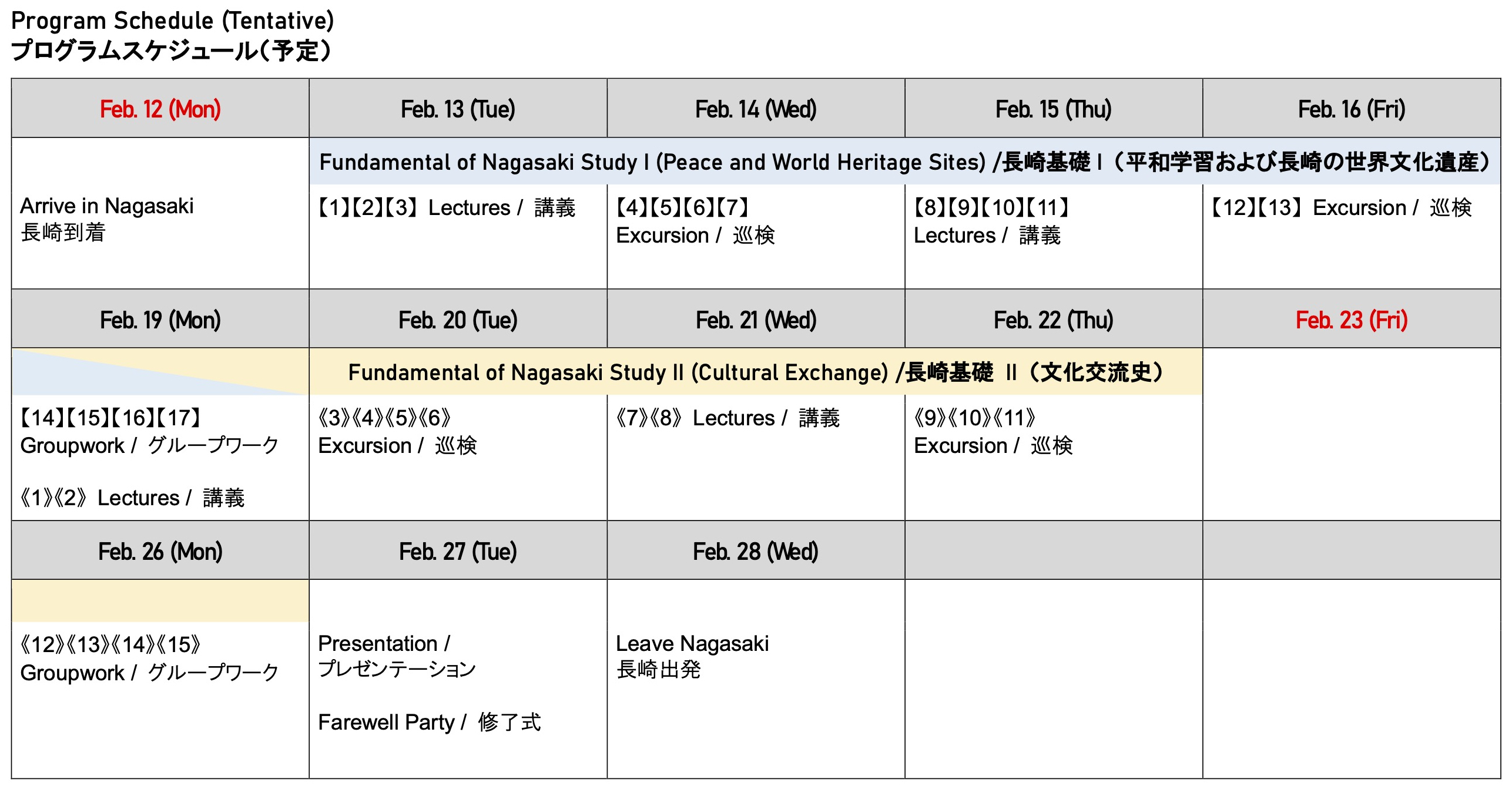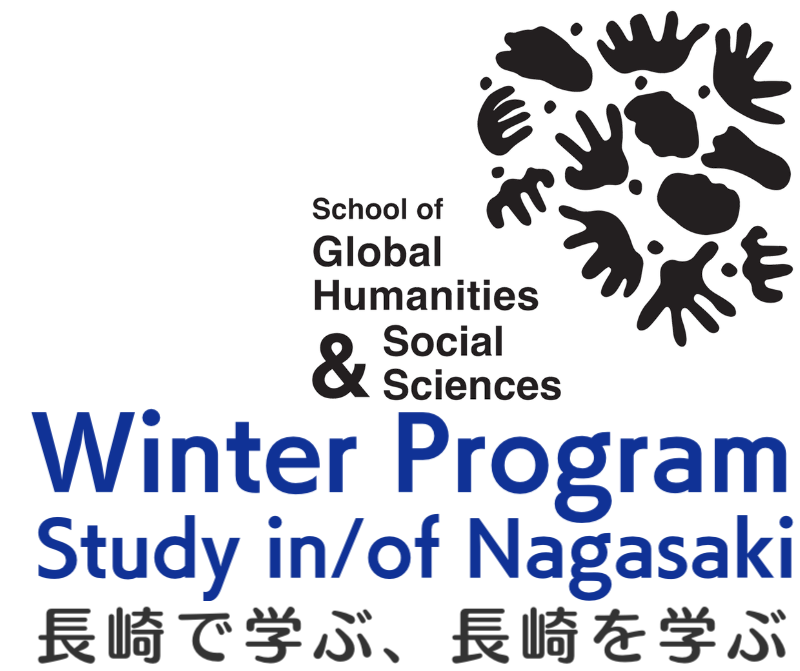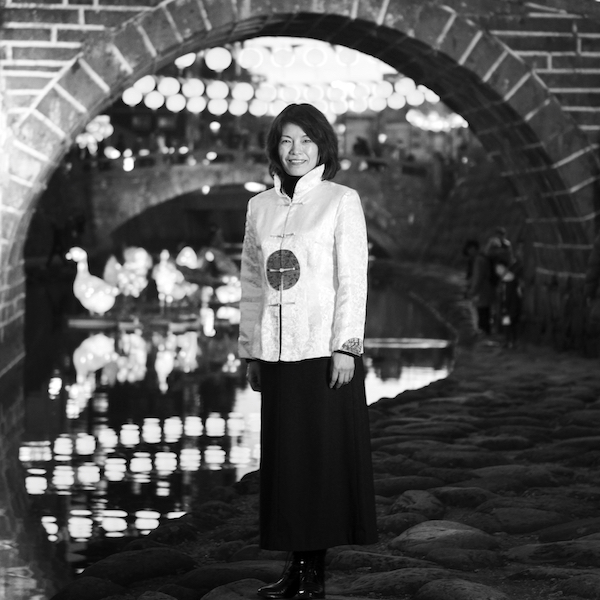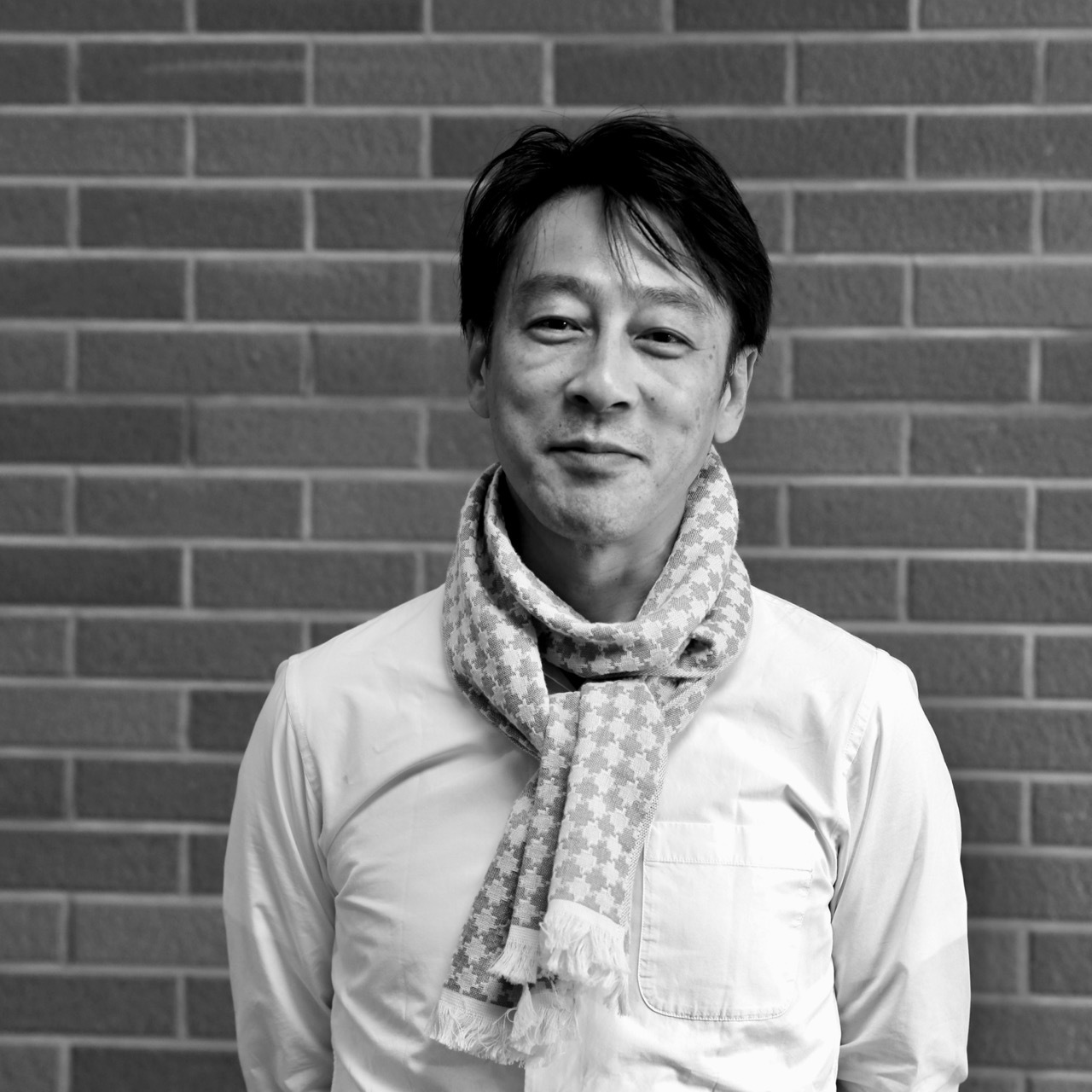Winter Program 2024
STUDY IN/OF NAGASAKI
The Winter Program for International Students, to be held from February 13th to 27th, 2024, is a study program in Nagasaki itself, with its theme “learning in/of Nagasaki.” The program consists of lectures, field trips, and group work on three sub-themes: (1) peace and nuclear abolition; (2) hidden Christianity; and (3) history of cultural exchange with mainland Asia. The program will be conducted in Japanese.
長崎で学ぶ、長崎を学ぶ
2024 年 2 月 13 日から 27 日まで実施される留学生向けウィンタープログラムは、そのテーマを「長崎で学ぶ、長崎を学ぶ」とし、長崎において、長崎そのものを対象とする学習プログラムです。長崎を特徴づける 3 つのトピック、すなわち、(1)平和と核廃絶、 (2) 潜伏キリシタン、(3) 大陸との文化交流史の3つのサブテーマを設定し、講義と巡検、グループワークから構成されます。プログラムは日本語で実施されます。
Duration/プログラム期間
February 13th, 2024 – February 27th, 2024
2024年2月13日~2月27日
Medium of instruction/教授言語
Japanese
日本語
NEWS
Sep. 1 2023
Information on the 2024 Winter Program is open and starts nomination.
2024年の冬プログラム「長崎で学ぶ、長崎を学ぶ」の詳細を公開し,
ノミネーションを開始しました。
Program
Lecture&Excursion
In total, 2 programs are run by the SGHSS. This program is worth 4 Japanese university credits.
- Fundamental of Nagasaki Study I (Peace and Hidden Christianity)(2 credits)
- 【1】 Introduction: Geographical Background
- 【2】 Lecture 1: Historical Background (Nagasaki)
- 【3】 Lecture 2: Historical Background (Peace study)
- 【4】 Field Excursion Guide for Urakami
- 【5】 Excursion in Urakami (1) *
- 【6】 Excursion in Urakami (2)
- 【7】 Excursion in Urakami (3)
- 【8】 Lecture 3: Historical Background (UNESCO World Heritage)
- 【9】 Lecture 4: Historical Background (UNESCO World Heritage)
- 【10】 Lecture 5: Historical Background (Nagasaki now and then) (1)
- 【11】 Lecture 6: Historical Background (Nagasaki now and then) (2)
- 【12】 Excursion in Twenty-Six Martyrs Museum
- 【13】 Excursion in Suwa
- 【14】 Groupwork: Peace study (1)
- 【15】 Groupwork: Peace study (2)
- 【16】 Groupwork: Hidden Christianity (1)
- 【17】 Groupwork: Hidden Christianity (2)
- * Excursion in Urakami: The tour will visit Peace Park, the hypocenter park, the Atomic Bomb Museum, Sakamoto Campus, Kyonomine Cemetery, Anakobo Temple, and Urakami Cathedral.
- 長崎基礎 I (平和学習および潜伏キリシタン)(2 単位)
- 【1】 導入:地理的背景
- 【2】 講義 1:歴史的背景(長崎)
- 【3】 講義 2:歴史的背景(平和学習)
- 【4】 巡検ガイダンス(浦上地区)
- 【5】 巡検(浦上地区)(1) *
- 【6】 巡検(浦上地区)(2
- 【7】 巡検(浦上地区)(3)
- 【8】 講義 3:歴史的背景(長崎の世界文化遺産)
- 【9】 講義 4:歴史的背景(長崎の世界文化遺産)
- 【10】 講義 5:歴史的背景(長崎の昔と今)(1)
- 【11】 講義 6:歴史的背景(長崎の昔と今)(2)
- 【12】 巡検(日本二十六聖人記念館)
- 【13】 巡検(諏訪)
- 【14】 グループワーク(平和学習)(1)
- 【15】 グループワーク(平和学習)(2)
- 【16】 グループワーク(潜伏キリシタン)(1)
- 【17】 グループワーク(潜伏キリシタン)(2)
- * 巡検(浦上地区) 平和公園、爆心地公園、長崎原爆資料館、坂本キャンパス、経の峰墓地、 穴弘法寺、浦上天主堂などを巡ります。
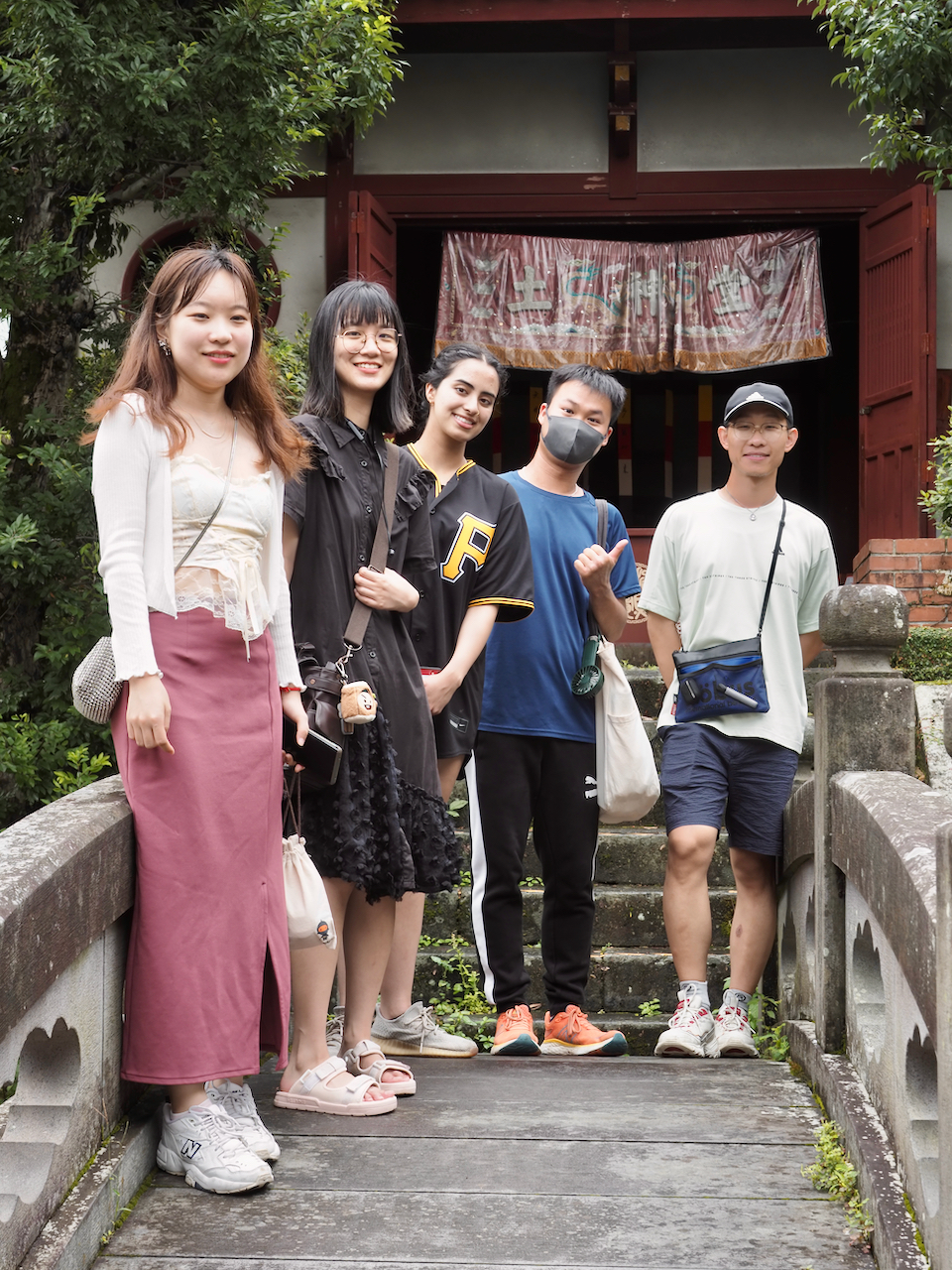
- Fundamental of Nagasaki Study II (Cultural Exchange) (2 credits)
- 《1》 Lecture 1: History of cultural exchange (Ceramic industry) (1)
- 《2》 Lecture 2: History of cultural exchange (Ceramic industry) (2)
- 《3》 Excursion in Arita & Hasami (1)*
- 《4》 Excursion in Arita & Hasami (2)
- 《5》 Excursion in Arita & Hasami (3)
- 《6》 Excursion in Arita & Hasami (4)
- 《7》 Lecture 3: History of cultural exchange (Chinese culture) (1)
- 《8》 Lecture 4: History of cultural exchange (Chinese culture) (2)
- 《9》 Lecture 5: History of cultural exchange (Western medicine) (1)
- 《10》 Lecture 6: History of cultural exchange (Western medicine) (2)
- 《11》 Excursion for Chinese culture (1)**
- 《12》 Excursion for Chinese culture (2)
- 《13》 Excursion for Chinese culture (3)
- 《14》 Groupwork: Ceramic industry (1)
- 《15》 Groupwork: Ceramic industry (2)
- 《16》 Groupwork: Chinese culture (1)
- 《17》 Groupwork: Chinese culture (2)
- * Excursion in Arita & Hasami: The tour will visit Hatanohara climbing kiln site, Chieji climbing kiln site, Hasami Museum of History and Culture, and ARITA History and Folklore Museum.
** Excursion for Chinese culture and western medicine: The tour will visit the former Chinese settlement, Chinatown, Kofukuji Temple, Sofukuji Temple, Goshinji Temple, and Nagasaki (Koshima) Yojosho Remains Museum.
- 長崎基礎 II (文化交流史) (2 単位)
- 《1》 講義 1:歴史的背景(陶磁器)(1)
- 《2》 講義 2:歴史的背景(陶磁器)(2)
- 《3》 巡検(波佐見・有田)(1)*
- 《4》 巡検(波佐見・有田)(2)
- 《5》 巡検(波佐見・有田)(3)
- 《6》 巡検(波佐見・有田)(4)
- 《7》 講義 3:歴史的背景(中国文化)(1)
- 《8》 講義 4:歴史的背景(中国文化)(2)
- 《9》 講義 5:歴史的背景(西洋医学)(1)
- 《10》 講義 6:歴史的背景(西洋医学)(2)
- 《11》 巡検(中国文化)(1)**
- 《12》 巡検(中国文化)(2)
- 《13》 巡検(中国文化)(3)
- 《14》 グループワーク(陶磁器文化)(1)
- 《15》 グループワーク(陶磁器文化)(2)
- 《16》 グループワーク(中国文化)(1)
- 《17》 グループワーク(中国文化)(2)
- * 巡検(波佐見・有田) 畑ノ原窯跡、智惠治登窯跡、波佐見町歴史文化交流館、有田町歴史民俗 資料館などを巡ります。
- ** 巡検(中国文化 / 西洋医学) 旧唐人屋敷、中華街、興福寺、崇福寺、悟真寺、長崎(小島)養生所跡資料 館などを巡ります。
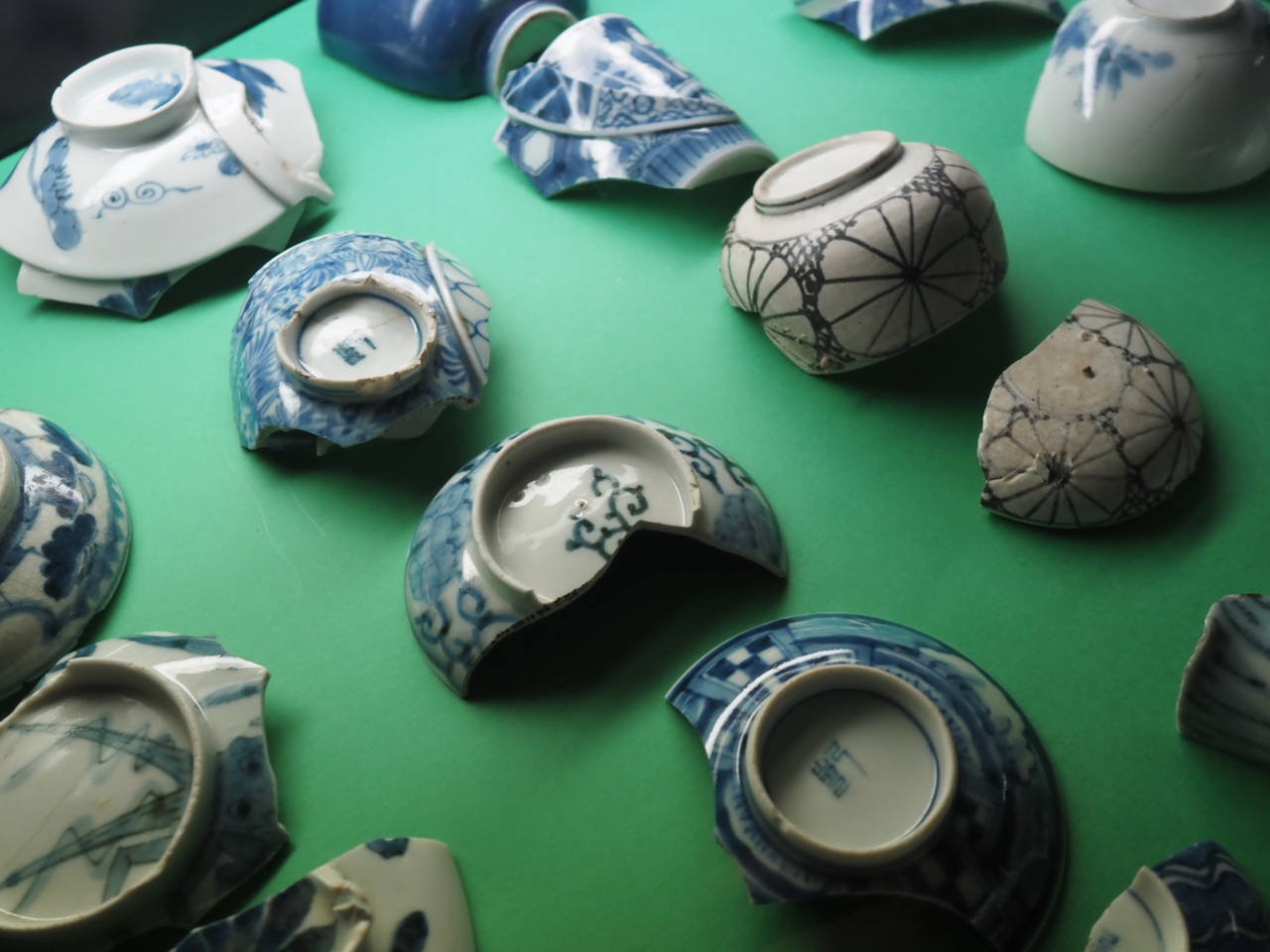
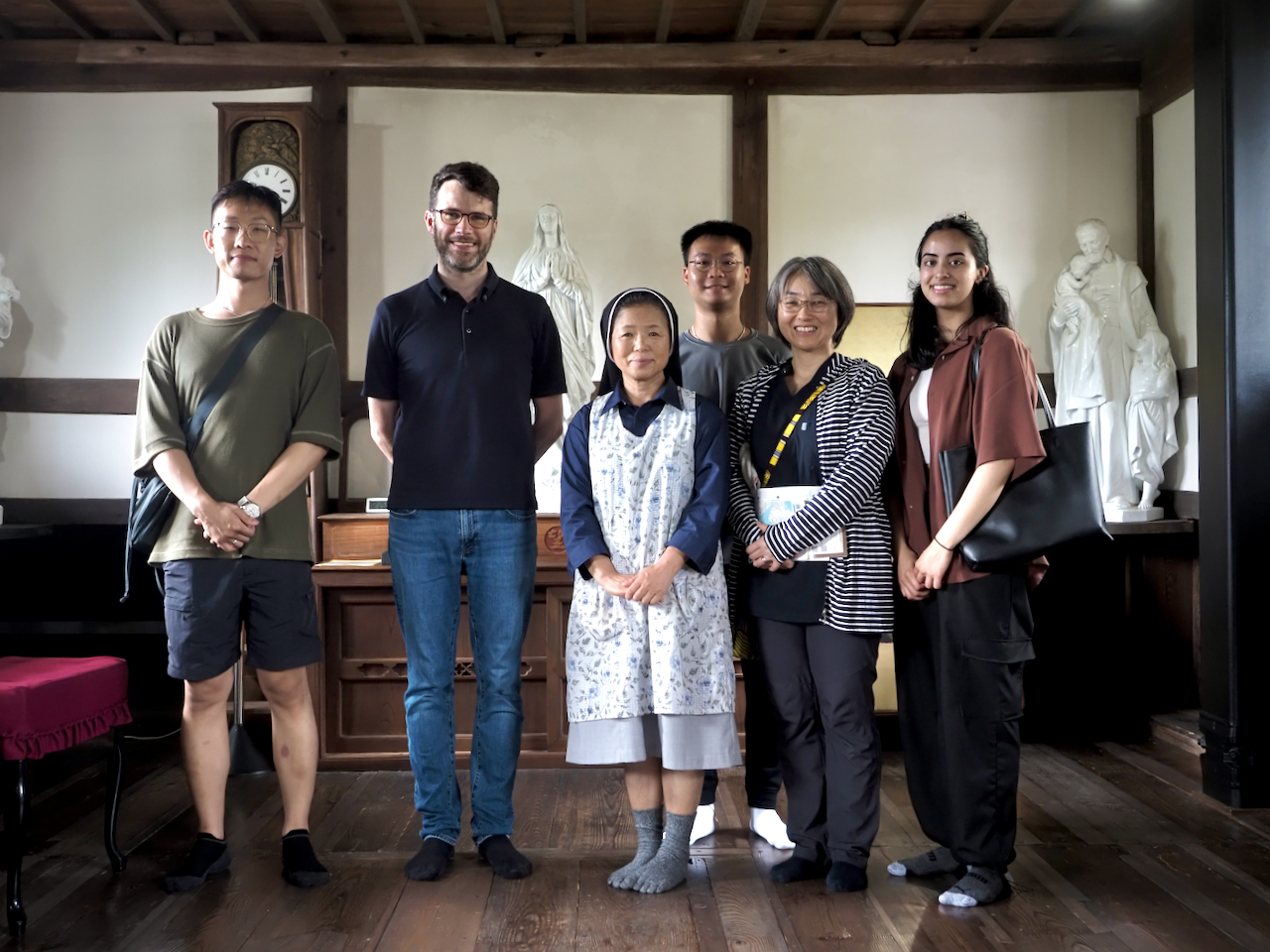
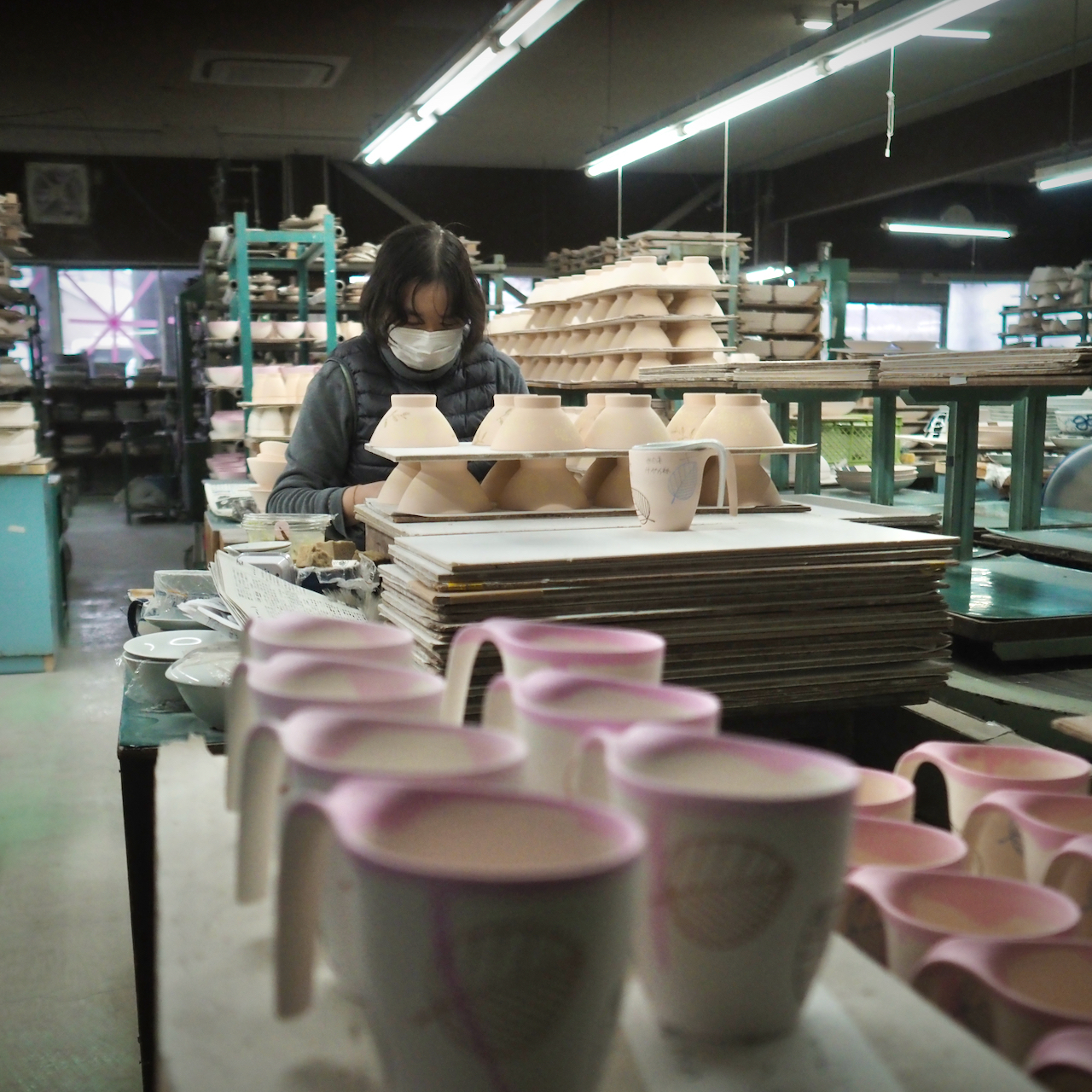
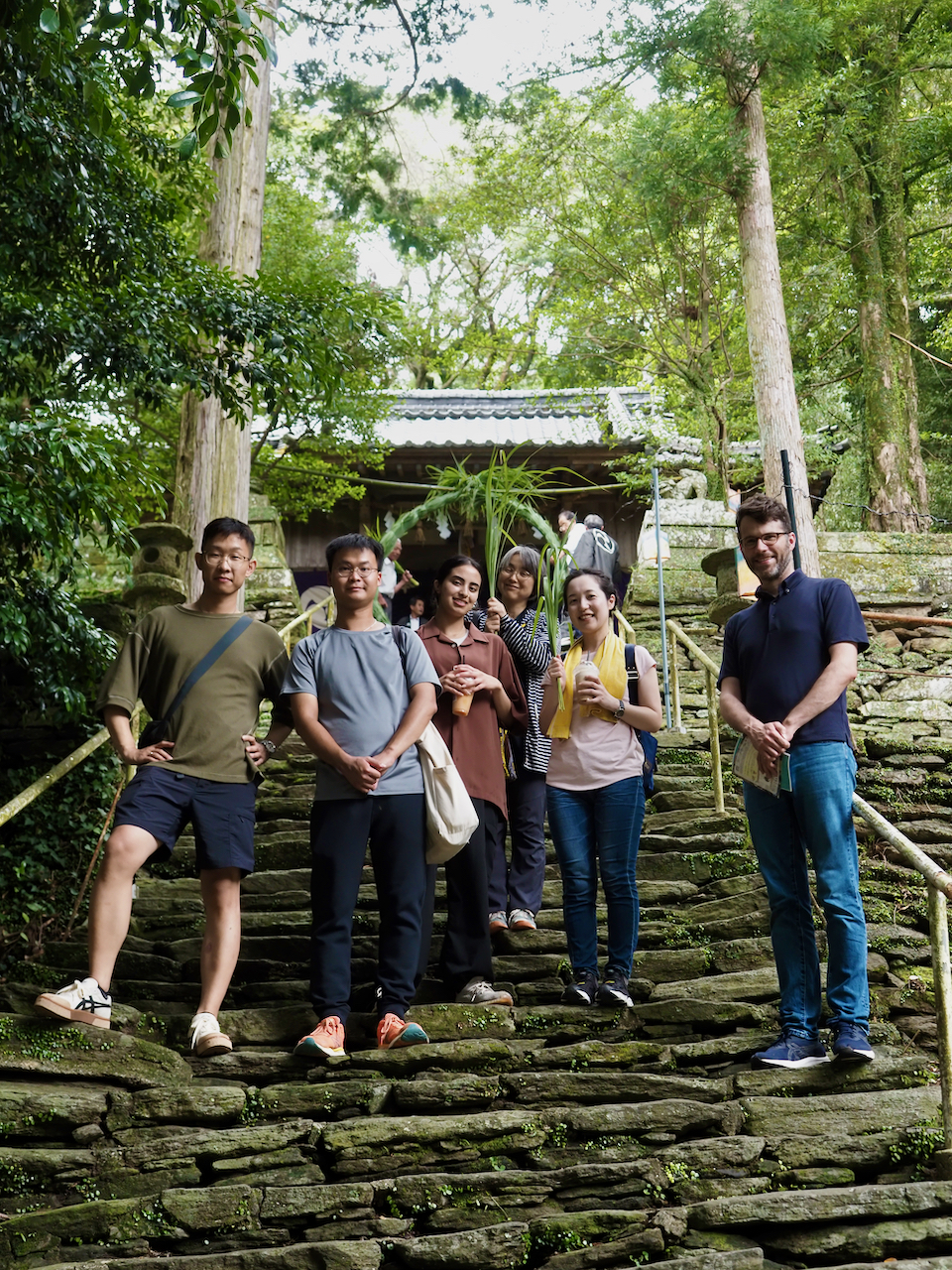
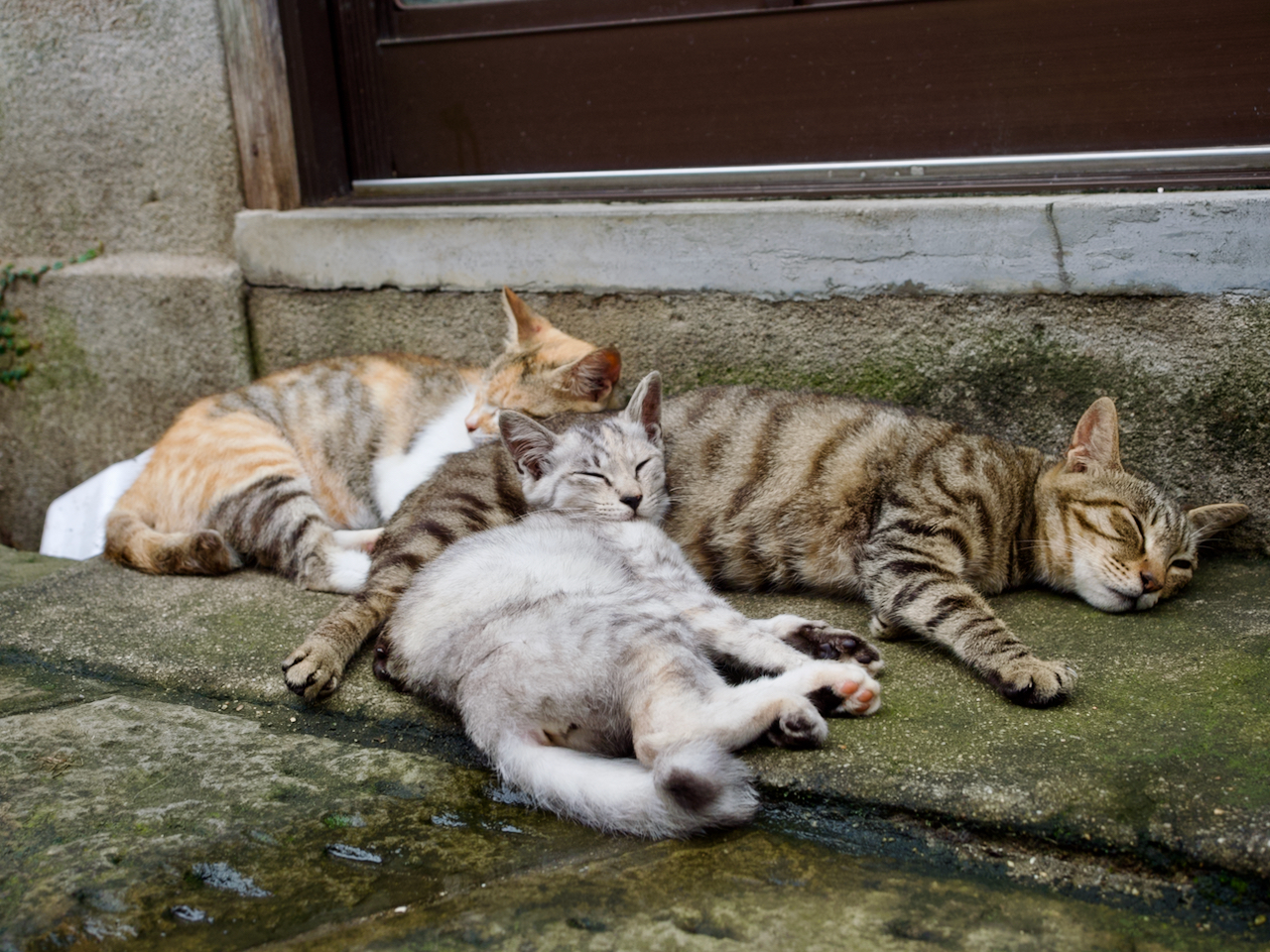
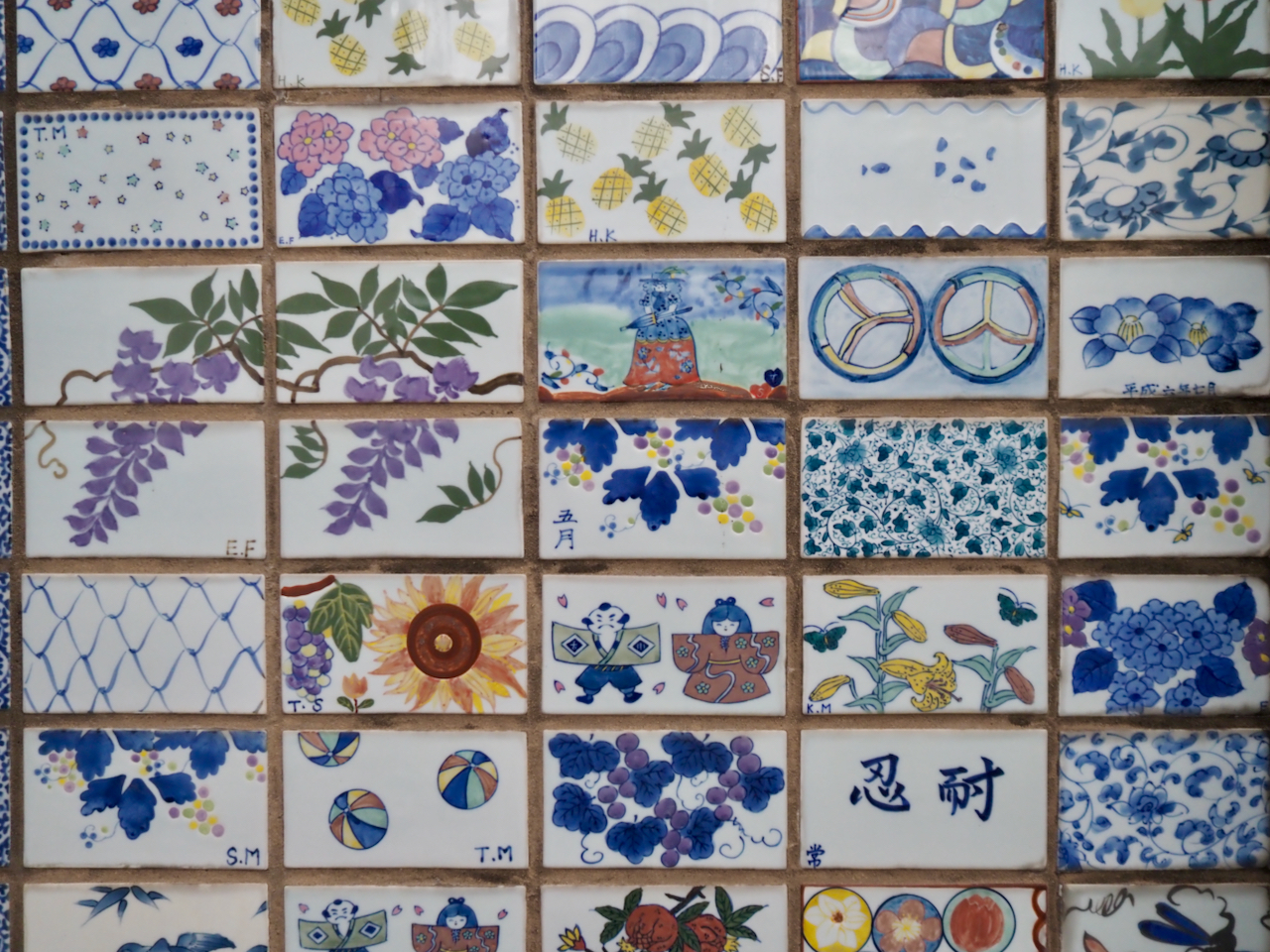
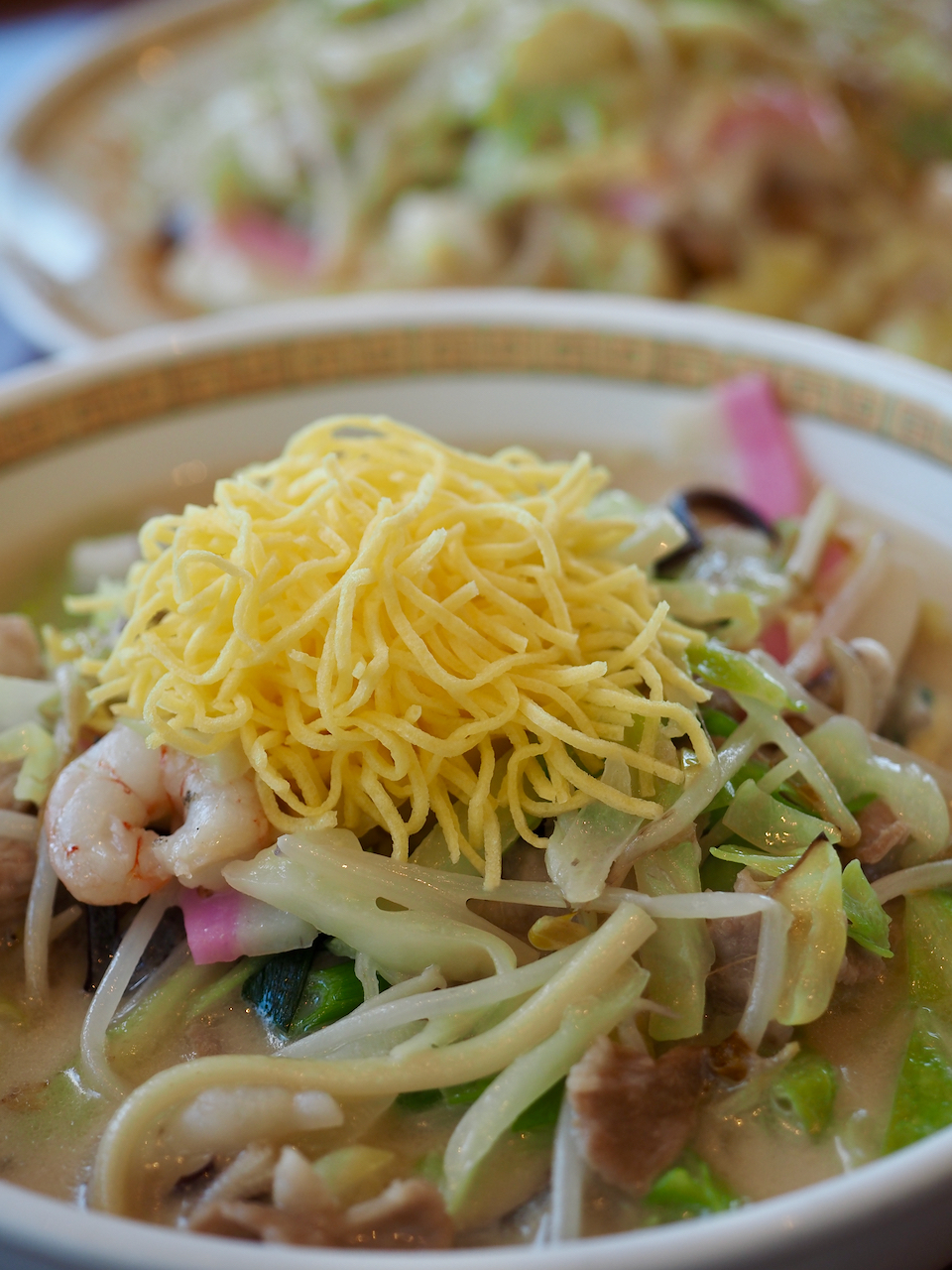
Schedule/スケジュール
